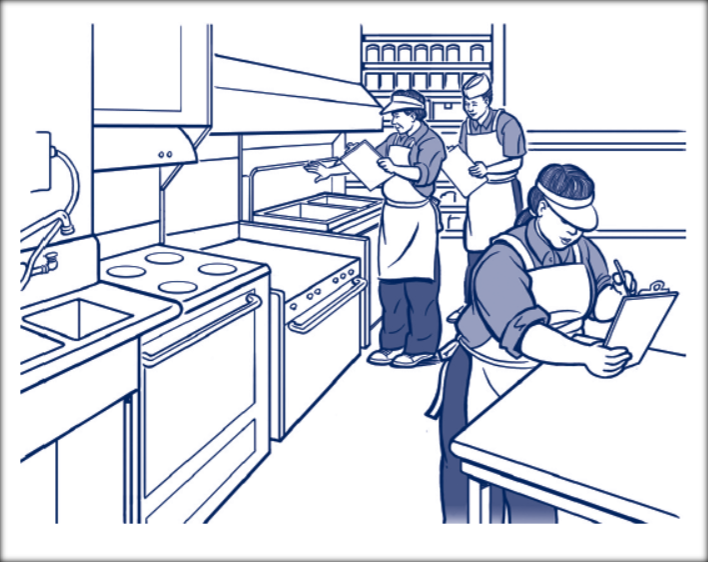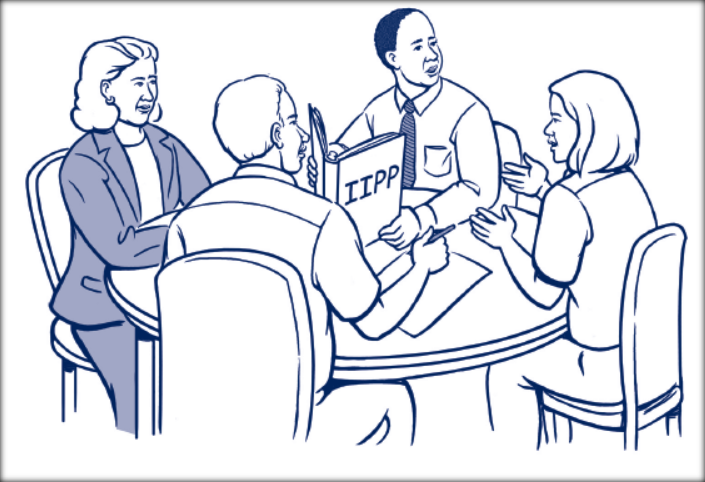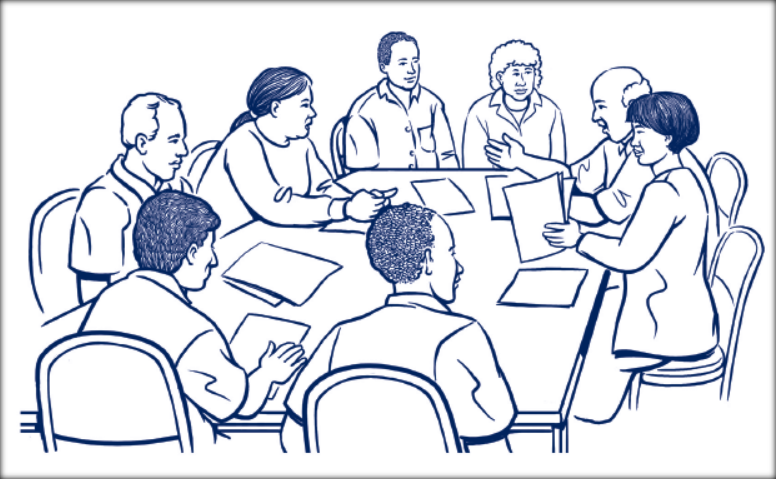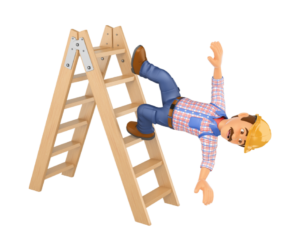Photo of the day: Effective Health and Safety Committees
8 min readA health and safety committee, comprised of worker and management representatives who meet regularly, brings the internal responsibility system into practice. This system recognizes that the employer and workers have a shared responsibility for workplace health and safety, with the employer having the final authority and responsibility. In most Canadian jurisdictions a health and safety committee is required by law.
In the photo of today and This infographic outlines requirements and good practices for an effective health and safety committee, from defining roles and responsibilities to providing training and resources to recognizing and addressing workplace hazards.

Roles of Health and Safety Committees
A health and safety committee can be an important way to improve conditions on the job. The committee provides a forum for employees and management to work together to solve health and safety problems. An effective committee can help prevent injury and illness on the job; increase awareness of health and safety issues among workers, supervisors, and managers; and develop strategies to make the work environment safe and healthy.
The following is a list of some possible roles of a health and safety committee.
Hazard Identification, Evaluation, and Control
- Review injury data, accident reports, and workers’ compensation records.
- Conduct regular walkaround inspections to identify potential health and safety hazards.
- Conduct safety and health job analyses to identify problems.
- Design and conduct health and safety surveys.

- Collect and review Material Safety Data Sheets (MSDSs).
- Propose and evaluate various ways to improve safety conditions.
- Get recommendations acted upon.
- Review and evaluate corrective actions taken by management.
- Temporarily “shut down” unsafe operations until a hazard is corrected.
- Collect and review information on new chemicals, procedures, and processes before they are introduced.
- Participate in studies conducted by outside researchers or consultants.
- Establish or improve procedures for employees to report safety hazards or suggest improvements without fear of reprisal.
Information and Education
- Respond to concerns raised by workers, supervisors, and managers.
- Recommend training for new employees, supervisors, and managers and refresher training on health and safety practices, procedures, and emergency response.
- Plan and organize training programs.
- Establish or improve procedures for employees to report health symptoms without fear of reprisal.
- Keep workers, supervisors, and managers informed about the committee’s activities.
Accident/Incident Investigations
- Investigate accidents, including their root causes.
- Establish procedures for reviewing reports of all safety incidents, including accidents, illnesses, and deaths.
- Review accident/incident reports and make recommendations for appropriate corrective action.
- Develop systems for reporting accidents and “near misses.”

Safety and Health Planning
- Establish procedures to review inspection reports.
- Recommend and track new safety and health rules and work practices.
- Review proposed equipment purchases and make recommendations.
- Regularly review and evaluate the employer’s Injury and Illness Prevention Program (IIPP).
- Develop a tracking system that enables the committee to monitor progress on safety issues.
Making Health and Safety Committees Effective
Committee Membership and Procedures

- Make sure there is equal representation of workers and managers.
- Have workers or their union pick their own representatives.
- Make sure there are senior managers on the committee who have the authority to make decisions.
- Choose members who will be active and productive team players. Both management and employee representatives should be fully committed to the committee’s work.
- Make sure management and employee representatives share responsibility for setting agendas and goals, chairing meetings, and taking on specific tasks.
- Agree on guidelines for effective communication and mutual respect among committee members.
- Establish procedures for employees to report hazards or suggest safety improvements to the committee without fear of reprisal.
Resources Needed
- Secure support from all levels of the organization to commit adequate time and resources to make the committee successful.
- Make sure all members receive enough training to be effective on the committee.
- Provide adequate paid work time for members to attend meetings and carry out their committee responsibilities.
- Ensure that committee members have access to the worksite and to all relevant information necessary to carry out their duties.
- Use outside experts, as needed.
Planning the Meeting

- Plan the meeting with management and worker representatives, including prioritizing the topics that should be covered and when and where the meeting will be held.
- Send the agenda and other relevant committee information to committee members and other interested parties at least five days prior to the meeting.
- Review minutes from the last meeting and check on the status of any pending actions.
- Review any concerns and suggestions from workers or supervisors so they can be brought to the committee.
Running a Productive Meeting
- Start on time.
- Establish the ground rules:
- Ensure there is agreement on the process. For example, will disagreements be resolved by formal votes?
- Maintain open and balanced discussion, and make sure everyone has an equal chance to speak.
- Define and agree upon roles and responsibilities.
- Keep the focus on safety and health issues. Do not allow personal attacks.
- Seek approval of the agenda by participants. Revise if needed.
- Introduce new members and guests.
- Set clear time limits for discussion of agenda items.
- Review action items from the previous meeting.
- Try to make progress on smaller steps while working toward larger objectives.
- Keep good minutes of the meeting to document decisions made.
- Establish action items and responsibilities: Who, what, and when?
- Set the date, time, and place of the next meeting, and develop a preliminary agenda.
- Evaluate the meeting. Were expectations met? Was the agenda followed? Were problems resolved? Can future meetings be improved?
- Close the meeting on time and on a positive note.
Meeting Follow-up
- Prepare the meeting minutes.
- Distribute and/or post the minutes.
- Follow up on action items and publicize your successes.
Download Infographic
Effective Health and Safety committees
More Photos
- Photo of the day: best workplace safety tips
- Photo of the day: The Importance of Stop Work Authority in Maintaining Workplace Safety
- Photo of the day: Tomorrow’s Reward for Working Safely Today: Cultivating a Culture of Safety
- Photo of the day: Preventing slips and trips at work
- Photo of the day: Learn the DRSABCD action Plan
- Working with Electricity Electrical Accidents Guide for Electrical Workers
- Photo of the day: Hearing Protection Device Selection
- Photo of the day: If An Earthquake Shakes You-Infographic free
- Fire Safety Posters Free Download
- Photo of the day: First Aid for Electrical Burns-Infographic free
- Infographic: First Aid for Cuts and Scrapes free download
- Photo of The day: Work Safe with Lasers-Laser Safety free
- Photo of the day: Working Safely with chemicals and chemical Management
- Photo of the day: Safe work practices when using MEWPs ( updated)
- Photo of the day: Preventing Common Kitchen Hazards
- Photo of the day: Safe handling of Gas Cylinders and lecture bottles
- Photo of the day: Forklift Stability Triangle
- Photo of the day: Defective Tools Safe Work Practice
- Photo of the day: Lift With Your Legs Not With Your Back
- Photo of the day: First Aid for burns
- Photo of the day: The 7 Principles of HACCP
- Photo of the day: Working Safely with Suspended Loads
- Photo of the day: Heat Stroke First Aid and safety posters
- Photo of the day: Near-Miss Reporting and Posters
- Photo of the day: Ergonomic chair and office chair safety tips
- Photo of the day: Whole Body Vibration
- Photo of the day: Substation Safety Equipment
- Photo of the day: Bypassing Safety Controls Rules
- Photo of the day: Lightning Safety Tips
- Photo of the day: Overhead Power lines Clearance
- Photo of the day: Floor Marking
- Photo of the day: Types of Foot Protection
- Photo of the day: Types of Hand Protection
- Photo of the day: Lockout and Tagout Safety
- Photo of the day: Fall Protection Plans
- Photo of the day: Flood Safety Tips
- Photo of the day: Read All Labels Work safe
- Photo of the day: Run Project safely with Crane Hand Signals
- Photo of the day: Flagman and Traffic control
- Photo of the day: Managing Risks of Exposure to Solvents in the workplace
- Photo of the day: Scissor Lift Safety
- Photo of the day: HSE Bulletin Board
- Photo of the day: Arc-Fault Circuit Interrupters (AFCI)
- Photo of the day: Safe use of ladders and step ladders
- Photo of the day: Concrete Truck Driver Hand Signals
- Photo of the day: Extension Cord Safety Tips
- Photo of the day: Protect your Head
- Photo of the day: choosing the right Anchorage
- Photo of the day: Work-Related Asthma
- Photo of the day: Top FIVE Heavy Equipment Construction Site Safety Tips
- Photo of the day: sun safety in the workplace
- Photo of the day: Cannabis and Impairment in the Workplace
- Photo of the day: Position for safety and comfort-Safety Tips
- Photo of the day: Generator Safety
- Photo of the day: Controlling COVID-19 in the Workplace-Physical Barriers
- Photo of the day: Manual Material handling
- Photo of the day: Personal Protective Equipment last resort
- Photo of the day: WHMIS 2015 – Pictograms
- Photo of the day: Indoor Air Quality
- Photo of the day: Noise in the affected workplace
- Photo of the day: Fatigue at Work
- Photo of the day: Don’t be Driven to Distraction
- Photo of the day: working in heat and Humidex Rating
- How to use Plate Clamps Safely: Safety Moment#34
- Photo of the day: Sitting at work
- Photo of the day: 5 ways to reduce the risk of Slipping and Tripping
- Photo of the day: Preventing the spread of contagious illness
- Photo of the day: Incident Investigations
- Photo of the day: 10 Scaffold Safety Essentials
- Photo of the day: Effective Health and Safety Committees
- Photo of the day: New worker Orientation & Safety Orientation checklist
- Photo of the day: Workplace Inspection
- Photo of the day: musculoskeletal disorders
- Photo of the day: Emergency preparedness in the workplace
- Photo of the day: Mental health in the workplace
- Photo of the day: Trenching Safety Tips That Can Save a Life
- Photo of the day: Dangerous Goods Classes
- Photo of the day: Safety Equipment for Confined Spaces
- Photo of the day: Tips to reduce Heat stress in the workplace
- Photo of the day: hierarchy of controls
- Your steps to chemical safety
- H2S Gas and how to handle its Emergency
- Photo of the day: Importance of Mock drill and Fire Action Emergency Procedure
- Photo of the day: Choosing the Right Face Mask and the difference between a respirator and face mask
- Photo of the day: Confined space safety Precautions
- Breath Safely: The Proper Use of Respiratory Protection
- Photo of the day: Electric shock survival
- Photo of the day: Chemical Spill Emergency Response
- Photo of the day: Construction Site fire Safety
- Photo of the day: Confined Space rescue
- Photo of the day: Conveyors Safety Tips





